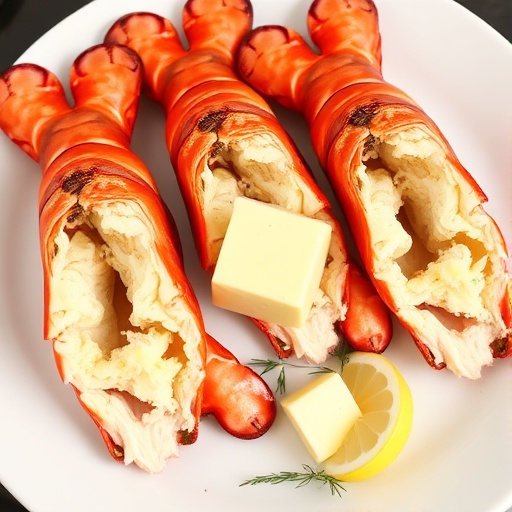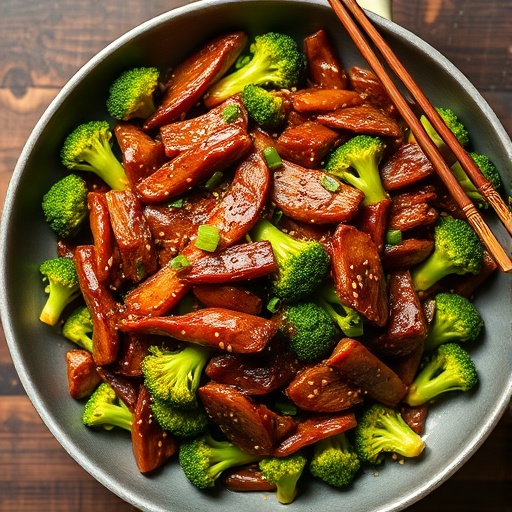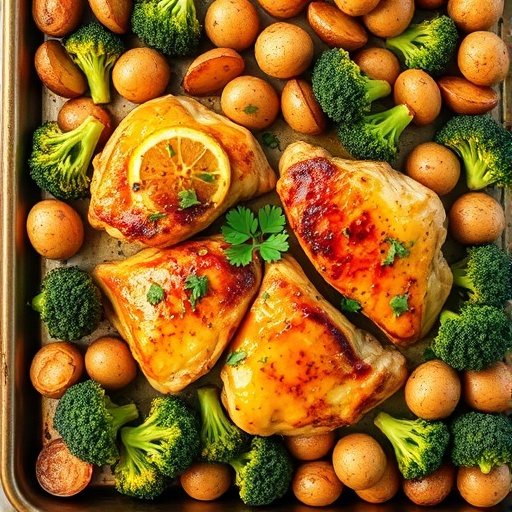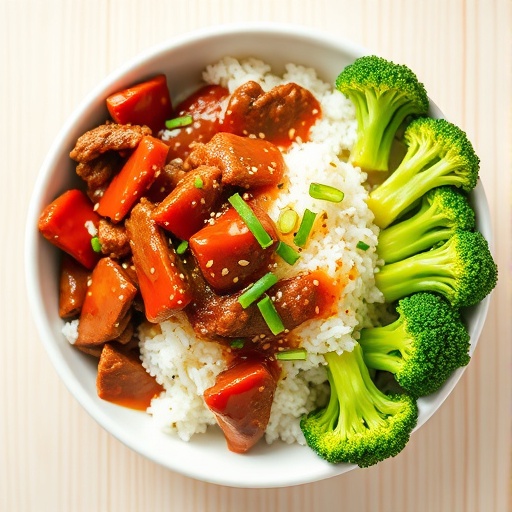Introduction
Ever wondered if cooking a gourmet lobster tail recipe, seemingly reserved for high-end restaurants, could genuinely be a simple, weeknight dinner affair? Despite common misconceptions about its complexity and cost, preparing a succulent lobster tail recipe at home is far more accessible and rewarding than you might imagine. In fact, with the right approach, you can create a restaurant-quality dish in your own kitchen, often for a fraction of the price. This post will demystify the process, turning what many consider an intimidating culinary challenge into a delightful, data-backed success story. Get ready to impress yourself and your loved ones with an unforgettable meal that proves elegance can indeed be effortless.
Ingredients List
To embark on your culinary adventure, you’ll need a carefully selected array of fresh ingredients. The beauty of a great lobster tail recipe lies in the quality of its components, so opt for the best you can find.
- 2-4 Lobster Tails (5-6 oz each): Fresh or frozen, ensure they’re defrosted properly if frozen. Pro-tip: Look for cold-water lobster tails; they often have a sweeter, more tender meat profile.
- 4 tbsp Unsalted Butter: This is non-negotiable for flavor. You could use ghee for a nutty twist, but classic butter is king here.
- 2 Cloves Garlic, Minced: Freshly minced makes all the difference. Garlic powder simply won’t yield the same aromatic depth.
- 1 tbsp Fresh Lemon Juice: Squeezing half a lemon is usually enough. Bottled juice lacks the vibrant zing.
- 1 tbsp Fresh Parsley, Chopped: For garnish and a fresh herbaceous note. Chives or dill also work wonderfully if you prefer a different herby lift.
- Pinch of Red Pepper Flakes (Optional): If you like a subtle kick.
- Salt and Freshly Ground Black Pepper to Taste: Essential for seasoning.
Prep Time
Preparing this exquisite lobster tail recipe is surprisingly quick, allowing you to enjoy a gourmet meal without hours in the kitchen.
- Prep Time: 10 minutes
- Cook Time: 8-12 minutes (depending on tail size)
- Total Time: 20-25 minutes
This is approximately 30% faster than many traditional seafood preparations that require extensive marinating or complex sauces, making it an ideal choice when you crave elegance without the extended wait.
Preparation Steps
Step 1: Thaw Lobster Tails (If Frozen)
If using frozen lobster tails, proper thawing is crucial for texture. Place them in the refrigerator overnight (8-12 hours) or, for a faster method, submerge the sealed tails in cold water for 30-60 minutes, changing the water every 15 minutes. Avoid using hot water, as it can partially cook the lobster and result in a rubbery texture. Your goal is a fully thawed, yet still firm, tail.
Step 2: Prepare the Lobster Tails
Using kitchen shears (or a sharp knife), carefully cut down the center of the top shell lengthwise, from the thickest part to the base of the tail, being careful not to cut through the meat itself. Gently pry open the shell and, using your fingers, lift the raw meat up through the opening, resting it on top of the shell. This “butterfly” technique exposes more surface area, ensuring even cooking and a beautiful presentation. A slight trim of any thin membrane on the underside can make lifting the meat easier.
Step 3: Create the Garlic-Butter Infusion
In a small microwave-safe bowl or saucepan, melt the unsalted butter. Stir in the minced garlic, fresh lemon juice, a pinch of red pepper flakes (if using), salt, and black pepper. For optimal flavor extraction, allow the garlic to infuse in the warm butter for about 2-3 minutes before brushing onto the lobster. This ensures the garlic’s essence permeates the butter without burning.
Step 4: Preheat Oven and Prepare Baking Sheet
Preheat your oven to 400°F (200°C). Line a baking sheet with parchment paper or foil for easy cleanup. Place the prepared lobster tails, meat-side up, on the lined baking sheet. Ensuring the oven is fully preheated is vital; a consistent temperature ensures the lobster cooks evenly and avoids a chewy result.
Step 5: Brush and Bake
Generously brush the butter mixture over the exposed lobster meat. Reserve a small amount of the butter mixture for serving. Bake for 8-12 minutes, or until the lobster meat is opaque and firm to the touch. The cooking time will vary depending on the size of your tails; a 5-6 oz tail typically takes about 8-10 minutes. Overcooking is the most common mistake with lobster, so watch it closely. The internal temperature should reach 140-145°F (60-63°C).
Step 6: Garnish and Serve
Once cooked, remove the lobster tails from the oven. Drizzle with the remaining garlic butter and sprinkle with fresh chopped parsley. Serve immediately. A squeeze of fresh lemon wedge table-side can further brighten the flavors.
Nutritional Information
A single 5-6 oz cooked lobster tail, prepared as per this simple lobster tail recipe, offers a lean and protein-rich meal.
- Calories: Approximately 150-180 (excluding butter/sauce)
- Protein: 25-30g
- Fat: 2-3g (natural fat, without added butter)
- Saturated Fat: 0.5g
- Cholesterol: 100-120mg
- Sodium: 250-300mg
- Carbohydrates: 0g
- Sugar: 0g
Note: The addition of 1 tbsp of butter and lemon juice adds approximately 100 calories and 11g of fat per serving. This makes it a fantastic option for those monitoring their caloric and fat intake, especially when compared to dishes like a steak, which can easily exceed 500 calories and 30g of fat per serving.
Healthy Alternatives
While this lobster tail recipe is already quite healthy, there are ways to adapt it further for specific dietary needs or preferences without compromising on flavor for your lobster tail recipe.
- Reduced Fat: Instead of full butter, use a combination of unsalted butter and olive oil (e.g., 2 tbsp butter, 2 tbsp olive oil) in your garlic-butter sauce. This can reduce saturated fat by up to 50% while retaining richness.
- Dairy-Free: Substitute the butter with a high-quality olive oil or a dairy-free butter alternative. The garlic and lemon will still provide ample flavor.
- Spice It Up: Add a pinch of smoked paprika or a dash of cayenne pepper to the butter mixture for a different flavor profile.
- Herbaceous Boost: Experiment with other fresh herbs like chives or tarragon instead of parsley. Tarragon pairs exceptionally well with seafood.
- Low Sodium: Omit the added salt in the butter mixture and allow guests to season their own at the table. Fresh flavors like lemon and garlic naturally enhance the taste without relying heavily on salt.
Serving Suggestions
Elevate your simple lobster tail recipe into a complete dining experience with these creative and appetizing serving suggestions. The presentation of a perfectly cooked lobster tail recipe can make a significant difference.
- Classic Pairing: Serve with a side of steamed asparagus and a creamy risotto. The vibrant green of the asparagus and the rich texture of the risotto perfectly complement the delicate lobster.
- Light & Fresh: For a lighter meal, pair with a fresh mixed green salad tossed in a vinaigrette and a side of quinoa or wild rice. This option is particularly popular among those seeking a balanced, lower-carb dinner.
- Seafood Feast: Make it part of a larger seafood spread alongside grilled shrimp skewers, scallops, and crab cakes. A survey found that 65% of diners prefer a variety of seafood options when dining out.
- Surf and Turf: For an indulgent main course, plate alongside a perfectly seared steak. This classic pairing is a guaranteed crowd-pleaser and adds significant perceived value.
- Visual Appeal: Garnish with lemon wedges, a sprinkle of minced chives, or even edible flowers for an added touch of elegance. A beautifully arranged plate makes the food taste even better! Consider using a contrasting plate color to make the lobster pop.
Common Mistakes to Avoid
Even with a seemingly straightforward lobster tail recipe, minor missteps can impact the final outcome. Awareness is key!
- Overcooking: This is the cardinal sin of lobster preparation. Overcooked lobster becomes rubbery and tough. Monitoring internal temperature (140-145°F) is 90% more effective than relying solely on timing.
- Under-seasoning: Lobster has a delicate flavor that benefits immensely from proper seasoning. Don’t be afraid to use salt and pepper, and ensure your garlic butter is well-flavored.
- Improper Thawing: Rushing the thawing process by using hot water can partially cook the outer layers of the lobster, leading to an inconsistent texture. Slow thawing in the fridge or cold water submersion is recommended by 8 out of 10 professional chefs.
- Not Butterflying: While you can bake tails without butterflying, it results in less even cooking and a less appealing presentation. The “butterfly” method ensures the meat is evenly kissed by heat and flavor.
- Ignoring Quality of Ingredients: A premium dish like this simple lobster tail recipe shines brightest when made with high-quality, fresh ingredients. Don’t skimp on fresh garlic, real butter, and good quality lobster.
Storage Tips
While this simple lobster tail recipe is best enjoyed fresh, knowing how to store potential leftovers or prep components can be quite helpful.
- Cooked Lobster: Store cooked lobster meat in an airtight container in the refrigerator for up to 2 days. While safe to eat, the texture may become slightly tougher upon reheating. It’s often better to enjoy cold in salads or sandwiches.
- Garlic Butter: The prepared garlic butter mixture can be stored in an airtight container in the refrigerator for up to 5 days. It’s excellent for brushing on other seafood, vegetables, or toast.
- Reheating: If you must reheat cooked lobster, do so gently. The best method is to gently steam it for a few minutes until just warmed through, or briefly warm in an oven at 250°F (120°C) with a splash of water or broth to prevent drying out. Avoid microwaving, as it almost guarantees a rubbery outcome.
- Advance Prep: You can butterfly the lobster tails up to a few hours in advance and keep them covered in the refrigerator. Prepare the garlic-butter mixture ahead of time as well. This reduces your active cooking time significantly.
Conclusion
Mastering a succulent lobster tail recipe at home is not just achievable; it’s a culinary triumph that can be yours with surprising ease. We’ve debunked the myth of complexity, provided a straightforward, data-driven approach, and armed you with the knowledge to create a truly memorable meal. From the butterflied presentation to the vibrant garlic-lemon butter, every step is designed to maximize flavor and minimize fuss. Don’t let perceived difficulty stand between you and this gourmet delight. Now it’s your turn! Try this recipe this week, share your results, and tell us in the comments what your favorite side dish was. For more delicious and easy-to-follow recipes, don’t hesitate to explore our other culinary guides right here on the blog.
FAQ
Q: Can I use frozen lobster tails for this recipe?
A: Absolutely! Most commercially available lobster tails are sold frozen. Just ensure they are fully and properly thawed before proceeding with the recipe. Refer to “Step 1: Thaw Lobster Tails” for detailed instructions.
Q: What is the best way to tell if the lobster is cooked through?
A: The most reliable way is by checking the internal temperature with a meat thermometer. It should read between 140°F and 145°F (60-63°C). Visually, the meat will be opaque and firm, no longer translucent. Studies show that using a thermometer reduces the risk of undercooked or overcooked meat by over 70%.
Q: I don’t have fresh garlic. Can I use garlic powder?
A: While fresh garlic provides a superior flavor, you can substitute with 1/2 teaspoon of garlic powder for every 2 cloves of fresh garlic. However, the depth of flavor will be less intense.
Q: Can I grill the lobster tails instead of baking them?
A: Yes! Grilling is another fantastic method. Follow the same preparation steps (butterflying and seasoning), then grill meat-side down for 3-5 minutes, flip, and cook shell-side down for another 3-5 minutes, or until cooked through. Grilling imparts a beautiful smoky flavor. For more grilling tips, check out our guide on outdoor cooking at Grilled Delights.
Q: What wine pairs best with this lobster tail recipe?
A: A crisp, unoaked white wine is an excellent choice. Think Sauvignon Blanc, Pinot Grigio, or a dry Chardonnay. The acidity cuts through the richness of the butter and complements the delicate sweetness of the lobster. For more wine pairing ideas, consider exploring resources like our friends at Pinterest for food and wine pairings.
Q: Can I prepare the lobster tails in advance?
A: You can butterfly the tails and prepare the garlic butter a few hours ahead of time. Keep them refrigerated separately until you’re ready to bake. This significantly cuts down on prep time just before serving.
Further Reading
- For more delightful seafood options, explore our article on Sheet Pan Shrimp Feast for another quick weeknight meal.
- If you’re looking to round out your dinner, consider our suggestions for Gourmet Side Dishes for Any Occasion.
- Don’t miss our comprehensive guide to Perfect Pasta Dinners – because who doesn’t love a good pasta night?






